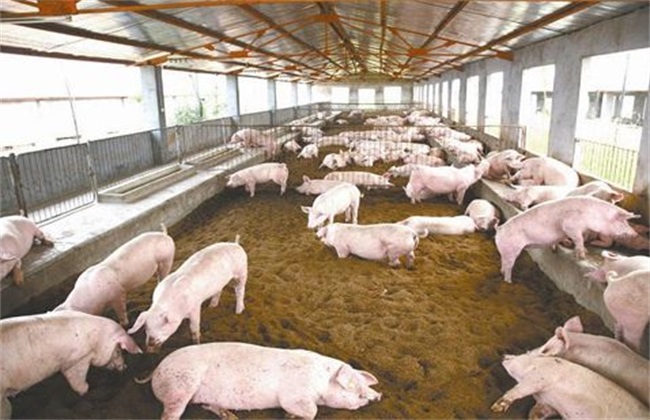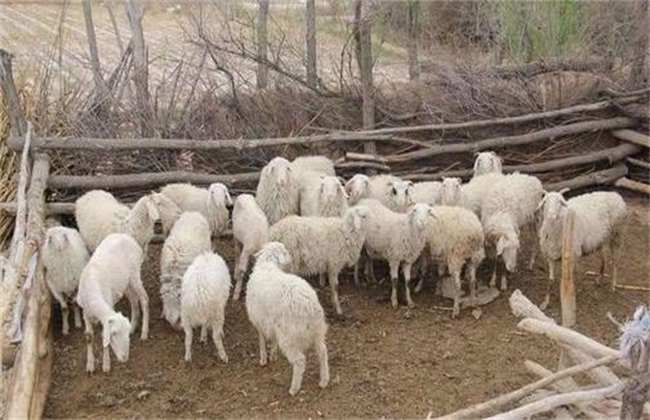Advantages and disadvantages of Pig raising in fermentation bed
Pork as the largest annual consumption of meat products in China, the breeding area in our country is naturally very large. And now with the continuous updating of aquaculture technology, there are many breeding models. Among them, pig breeding in fermentation bed is a popular breeding model in recent years. So what are the advantages and disadvantages of raising pigs in fermentation beds? Today, the editor will give you a brief introduction. Let's take a look at it.

I. the advantages of raising pigs in a fermentation bed
1. Reduce pollution
The primary advantage of pig breeding in fermentation bed is that it can effectively solve the environmental pollution caused by traditional pig farming. Because the cushion in the fermentation bed contains a variety of beneficial microorganisms with great vitality. To be able to degrade and digest the excretion of pigs, there is basically no need to clean the pigsty every day. Therefore, the waste produced by the piggery is basically negligible, and there is no sewage to wash the enclosure, which can achieve the goal of zero discharge.
2. Improve the environment
The pig-raising environment of the fermentation bed is generally based on the large window model which is fully open in summer. In winter, it should be sealed and insulated with a rolling curtain, which has good permeability and can control the temperature and humidity, which is very beneficial to the growth of pigs. And pig excreta through the decomposition of microorganisms, the pigsty is basically no odor, and will not breed mosquitoes and flies. Among them, the content of all kinds of harmful gases will be much lower than that of traditional pig houses, which can effectively improve the environment of pig houses.
3. Improve the feed utilization rate.
The beneficial microorganisms in the fillers in the fermentation bed can supplement the insufficient nutrients in the feed for pigs. Improve the utilization rate of vitamins and various trace elements. And in the feed to control the proportion of some beneficial microbial agents, such as natto, yeast and so on, can not only play the function of antibiotics, but also promote the reproduction of lactic acid bacteria and bifidobacteria in the gastrointestinal tract of pigs. Enhance the gastrointestinal function and disease resistance of pigs, improve the digestibility of feed utilization, but also reduce the cost of death row.
4. Improve pork quality.
The growth of pigs on fermentation mattresses not only has a very comfortable environment, can make pigs fully active, restore the original natural habits, and ensure the normal growth of pigs. And basically, there is no transmission of pathogens in the pig house, the incidence rate is very low, the pig body is clean and the pig color is white. The quality of pork is also very high, it is a kind of pollution-free pork.
Second, the disadvantage of raising pigs in fermentation bed.
Now, according to the current situation of pig raising market in our country, it still needs to be carefully considered that we can vigorously promote fermentation bed pig raising. At present, the fermentation bed pig raising model is generally only suitable for small-scale farmers with low summer temperature in the north. Because the cooling work of fermentation bed culture in summer is more difficult. Moreover, the cost of breeding is relatively high, and there are great requirements for breeding technology, so it is difficult to complete the implementation of epidemic prevention procedures.
The above is a brief introduction to the advantages and disadvantages of raising pigs in a fermentation bed. That's all for today's introduction. This article is for reference only. I hope I can help you all the time.
Related
- On the eggshell is a badge full of pride. British Poultry Egg Market and Consumer observation
- British study: 72% of Britons are willing to buy native eggs raised by insects
- Guidelines for friendly egg production revised the increase of space in chicken sheds can not be forced to change feathers and lay eggs.
- Risk of delay in customs clearance Australia suspends lobster exports to China
- Pig semen-the Vector of virus Transmission (4)
- Pig semen-the Vector of virus Transmission (3)
- Five common causes of difficult control of classical swine fever in clinic and their countermeasures
- Foot-and-mouth disease is the most effective way to prevent it!
- PED is the number one killer of piglets and has to be guarded against in autumn and winter.
- What is "yellow fat pig"? Have you ever heard the pig collector talk about "yellow fat pig"?



